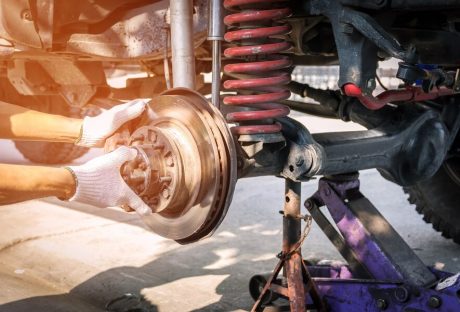Transportation drives economic development. As roadways become more congested, the capacity to move people and goods efficiently will be key for residents selecting where to live, and for businesses choosing where to expand. Technological advances in recent years have provided new opportunities for strategic approaches to congestion and have improved environmental outcomes related to mass transportation. Momentum is building, resulting in large-scale, long-term transportation plans. Public/private partnership strategies are forming to speed development and save money. Citizens are voting to help fund these far-reaching programs since efficient transportation promotes employment opportunities for people who otherwise would be excluded from many job options. In this article, Denise Hamet discusses some of the recent trends in transportation strategies around the United States.
Autonomous (“Driverless”) Public Transportation:
Self-driving vehicles have quickly moved from the realm of science fiction into the real world of transportation. Public transportation agencies have been closely watching the advances in this market from companies like Google and Intel. As a result, technologies are currently being developed for vehicles on preset routes that operate autonomously. Las Vegas is leading the testing of driverless buses in partnership with Keolis, a private company that has developed autonomous bus technology for use on public roads. The Keolis autonomous shuttle is equipped with LiDAR technology, GPS, cameras, and safety belts and is designed to communicate with traffic signals, operate on open roads, and navigate around pedestrians and moving traffic. Following this model, several companies are developing driverless shuttles for use across the country. Some cities, such as Phoenix, are currently combining traditional bus service with autonomous shuttles.
Public transit authorities are dealing with the same issues surrounding the use of autonomous vehicles on public roadways throughout the nation. This rapidly developing technology is pressing our legal and regulatory system to move forward on liability, insurance, and safety issues that are new to our systems.
Mobility as a Service (MaaS):
Developments in networking and artificial intelligence are driving a new concept for public transit–Mobility as a Service, or MaaS. The idea behind MaaS is that bundling all available transportation options for consumers in urban and metropolitan areas will provide more opportunities for users and maximize cost efficiency.
Ideally, customers will be able to make travel choices based on current traffic conditions, and electronic payments will be seamless and efficient. Transit services in lower demand can be downscaled, while resources can be quickly moved to the areas of greatest consumer needs. This system will theoretically reduce costs and environmental impacts while relieving pressure on infrastructures.
Electric and Hybrid Public Transportation:
Increased urban development around the world and increased awareness of carbon emissions are placing a greater focus on electric and hybrid transportation options. The City of Los Angeles, for example, is changing over its entire fleet of buses to electric vehicles by 2030.
Many cities and metro areas find that the initial cost of electric buses and trolleys is the most prohibitive aspect of their development. Electric buses can cost as much as twice that of traditional diesel buses; however, hybrid buses are much more in line with traditional costs. Advances in production technology will likely result in reduced acquisition costs, which, in conjunction with reduced fuel costs and reduced emissions, will make electric and hybrid options more attractive in the near future.
Putting it All Together:
Many cities are implementing long-term, multi-modal strategies. Denver, for example, is moving forward with multiple phases of the multi-billion-dollar FasTracks Program. At completion, the program will add more than 120 miles of commuter rail tracks, 18 miles of bus rapid transit (BRT), and 21,000 parking spaces at rail and bus stations. A crucial part of the program was the Denver Transit Partners (DTP) public/private partnership formed to implement the 36-mile Eagle P3 project.
DTP is a private consortium led by Fluor Corp. The team entered into a 34-year agreement with RTD for the 5-year design and build of the Eagle P3 project, followed by 29 years to operate and maintain the system.
Meanwhile, Sacramento continues to roll out its Green City Initiative, a partnership with Electrify America. The company is investing $44 million in Sacramento to catalyze a shift to zero-emission technologies by installing charging infrastructure, conducting outreach and education, and implementing programs designed to increase access to and use of Zero-Emission Vehicles (ZEVs). New programs and services–including two new car-sharing services, new ZEV routes, and state-of-the-art electric vehicle charging systems–are anticipated to launch throughout 2019.
The Future – the Need for Federal Funding:
With so much potential for improved transportation, funding is essential. Attention is currently focused on Congress’s approach to a new transportation bill, as the Fixing America’s Surface Transportation Act (FAST) expires in 2020. Infrastructure improvements are one of the unusual areas where bipartisan cooperation and compromise are possible in the course of legislating for the country’s needs.
One area of concern is funding for the federal Highway Trust Fund, which is based on federal fuel taxes on gasoline and diesel. These tax rates have not been modified in over 25 years, and unless funding is modified, economists project insolvency for the fund within two years. Many options are being considered to alter financing, and many of the developing local mass transit trends are going to be potentially funded by private investment. With the impending expiration of the FAST Act, all manner of funding options will inevitably be on the table for discussion.
The bottom line is:
Collaboration, creativity, and certainty of funding will all be essential to drive us forward.
Read Also:






















